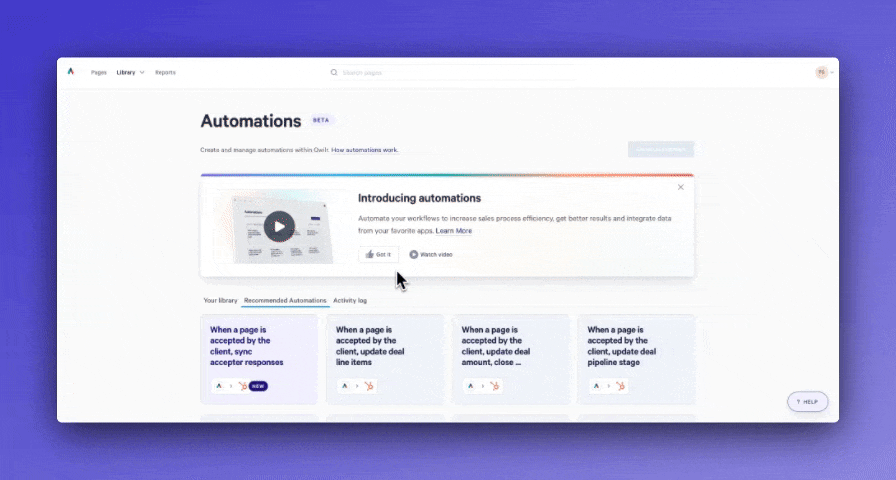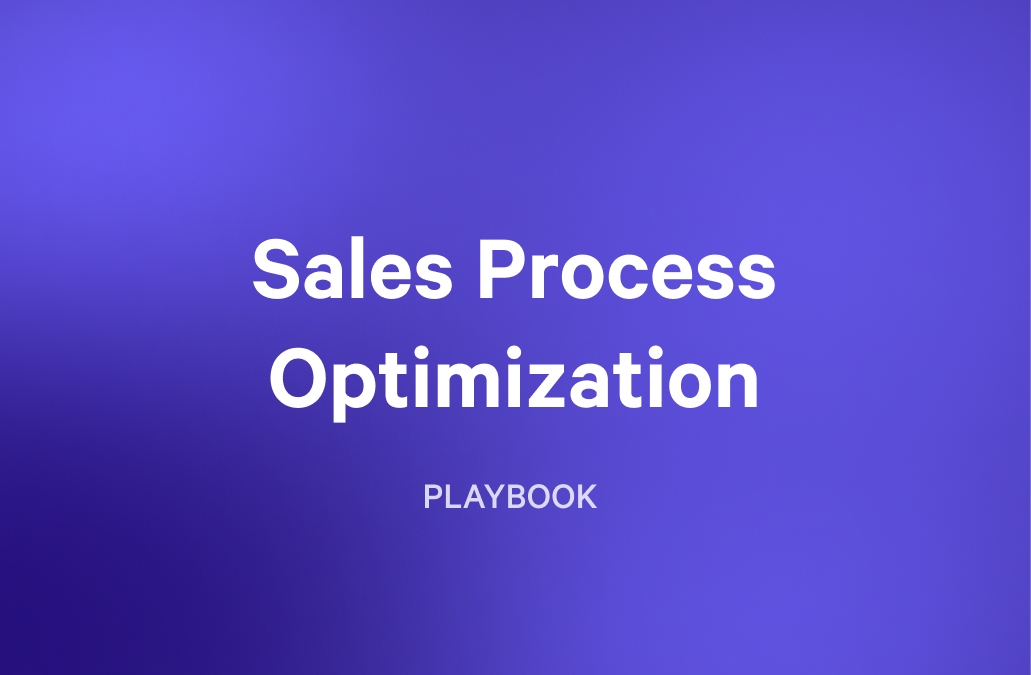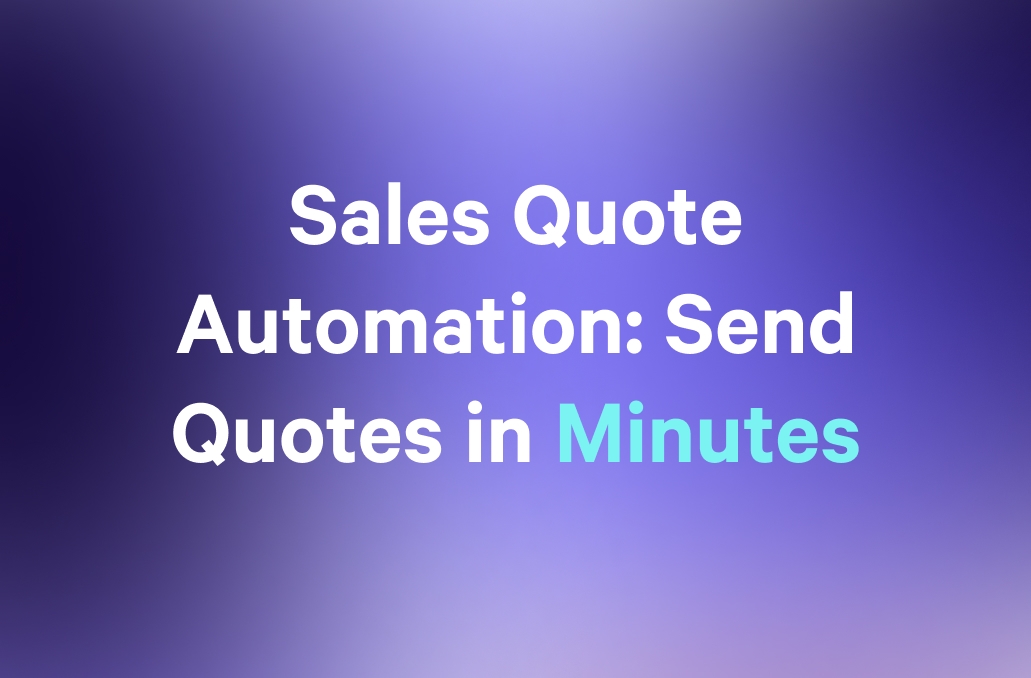Customer: “Why should I choose you over Competitor X?”
Salesperson: “Well… we’re… different.”
Customer: “How?”
Salesperson: “In ways I can’t disclose right now.”
Customer: “That’s a bold strategy. I’ll pass.”
Sales isn’t improv —at least, not if you want consistent results. The top performers don’t rely on charm alone; they follow a repeatable process that turns chaos into clarity and chance wins into reliable revenue. With the right RevOps alignment, you can connect people, processes, and technology to ensure every stage of your sales motion runs smoothly and predictably.
In this piece, we’ll get laser-focused on repeatability: how to build, optimize, and scale a sales process your team can lean on, not as a rigid straitjacket, but as a dependable backbone that supports consistency, confidence, and growth.
Key takeaways
1. Repeatability drives predictable growth: Clear stages, templates, feedback loops, and aligned tools turn ad hoc selling into a consistent, scalable system.
2. Structure, not rigidity: Define outcomes and exit criteria, not every action, so reps can sell naturally while maintaining consistency.
3. Retrofit and measure: Start small, standardize materials, enforce through tools, coach, and track metrics—repeatability is built stage by stage.
4. Align across RevOps: Marketing, Sales Ops, and Customer Success must work together to make repeatability a company-wide advantage.
What makes a sales process repeatable (Not just “a process”)
Let’s start with a crucial distinction.
A sales process is simply a series of stages and actions that guide leads from interest to close.
A repeatable sales process, on the other hand, is a refined, documented, and measurable system that any rep can follow with consistency—delivering predictable outcomes you can forecast, scale, and improve over time.
Here’s what makes it truly repeatable:
- Clarity in stage definitions: Every pipeline stage has specific exit criteria (e.g., “budget is confirmed,” “decision-maker identified,” “contract reviewed”). Ambiguity is the enemy of consistency.
- Shared templates and assets: Reps don’t start from scratch. They use branded, pre-approved materials that communicate the same value story—with enough room for personalization.
- Feedback loops: Stalled deals get flagged, recycled, or refined. You’re not guessing where things went wrong; you’re learning from the data.
- Data-driven measurements: You track conversion rates, time-in-stage, and deal velocity to identify friction points.
- Tool alignment: Your CRM, proposal platform, and communication tools enforce the process quietly—guiding reps rather than policing them.
In short:
Repeatable = scalable + measurable + consistent.
If your process exists only as a dusty “how we sell” slide deck that each rep interprets differently, it’s not repeatable, it’s folklore.
Why repeatability matters (a lot)
One-off wins look great in the short term. But no board or investor bets on “great months.” They bet on systems that can scale predictable performance across dozens of reps, territories, and quarters.
Here’s why repeatability is the real growth multiplier:
- Scalable onboarding: New reps ramp faster when they can follow a proven playbook instead of shadowing “rockstars” and absorbing tribal knowledge.
- Performance visibility: With a standardized process, leaders can see where deals get stuck (discovery, demo, or negotiation) and coach with surgical precision.
- Predictable forecasting: Consistent stage definitions mean your pipeline reports actually mean something.
- Buyer trust: When every interaction feels professional and consistent, prospects sense reliability, not chaos.
Repeatability is how you evolve from a team that sells to a business that scales.
The 7 stages of a repeatable sales process
Let’s get practical. Below is a seven-stage blueprint: a flow that emphasizes clarity, measurable outcomes, and smooth buyer experiences. Each stage is fortified with guardrails that make the process repeatable without turning reps into robots.
| Stage | Outcome/Exit Criteria | Common Pitfall (if weak) |
|---|---|---|
Prospecting | Target list built, first outreach attempt logged | Too broad a list, poor lead prioritization |
Qualification | Buyer fits ICP; budget, timeline, and authority verified | Reps pushing unqualified leads |
Discovery | Pain points and stakeholders fully mapped | Shallow discovery, missing decision influencers |
Demo/Proposal | Tailored solution presented with aligned pricing | Feature-dumping or misaligned messaging |
Objection Handling/Negotiation | Objections addressed, next steps confirmed | Ad hoc rebuttals, loss of momentum |
Close | Signed contract, payment processed | Tool chaos: juggling e-sign, docs, and finance systems |
Post-Sale/Expansion | Onboarding complete, upsell or renewal opportunities mapped | Weak follow-up, missed expansion revenue |
A repeatable sales process doesn’t rely on “rockstar intuition.” It relies on structure: every stage with a clear purpose, measurable exit, and consistent buyer experience.
What repeatability looks like in action (by industry)
Repeatability isn’t a one-size-fits-all formula. It flexes based on your industry, but the principles stay the same: clarity, consistency, and scalability.
| Business Type | Typical Process | Common Pain Points | How a Repeatable Sales Process Helps |
|---|---|---|---|
SaaS Startup | Outreach → Demo/Trial → Paid | Prospects sign up but never activate; messy trial handoffs | Standardized discovery and follow-ups ensure activation and conversions. |
Enterprise B2B | Long, multi-stakeholder cycles | Version chaos with multiple PDFs and decks; stakeholder misalignment | Centralized templates and defined next steps prevent drift. |
E-commerce Supplier | Semi-automated; reps step in for large deals | Manual quotes eat time; inconsistent branding | Automated templates maintain consistency and protect margins. |
Common obstacles to repeatability (and how to sidestep them)
Building a repeatable process sounds easy enough: document steps, align the team, and go. But most organizations find that repeatability breaks not from complexity, but from neglect. Here’s where things go wrong (and how to fix them):
1. Overly rigid enforcement
Structure should not equal strictness. Over-enforce a process, and you strangle creativity. Reps freeze under “mandatory scripts,” and buyers feel the stiffness.
How to sidestep it: Define what “good” looks like for each stage, not every micro-action. Leave room for reps to adapt tone and tactics based on buyer personality.
2. Ignoring rep feedback
If the process doesn’t match the real-world selling environment, reps won’t use it. Period.
How to sidestep it: Create quarterly feedback loops. Gather reps to discuss friction points, stage clarity, and buyer resistance. Adjust the playbook accordingly.
3. Neglecting process evolution
The market shifts faster than most sales playbooks. Treat your process like gospel, and it’ll age out before the next quarter’s end.
How to sidestep it: Schedule semi-annual process reviews. Revisit your ICP, refine messaging, and map new buyer behaviors. Evolution keeps you relevant.
4. Tool misalignment
If your CRM or proposal tool adds friction instead of removing it, reps will find shortcuts—usually bad ones.
How to sidestep it: Every tool should either save time, improve visibility, or reduce errors. Audit your stack ruthlessly.
5. Lack of coaching and accountability
Without consistent reinforcement from leadership, process adherence fades into “optional.” And optional processes fail.
How to sidestep it: Tie coaching to process behaviors, not just outcomes. When managers model consistency, reps follow.
How to inject repeatability into a messy sales process
So, your current process feels like folklore—passed down through oral tradition and sticky notes? Good news: you don’t need to tear it down. You can retrofit repeatability, layer by layer, without breaking live deals.
Step 1: Audit your pipeline
Trace a few active deals from lead to close. Where do they consistently stall? Where do handoffs or definitions get murky? You can’t fix what you can’t see. Tip: Document these observations visually to spot patterns and bottlenecks quickly.
Step 2: Pick one stage to tighten
Start small, for example, qualification. Replace vague criteria (“good fit”) with concrete ones (“confirmed budget,” “decision-maker identified”). Test it before scaling. This focused approach ensures small wins build confidence and buy-in from the team.
Step 3: Standardize materials
If every rep builds their own deck, you’re bleeding consistency. Introduce standardized templates—branded, approved, flexible enough for personalization. Standardized assets save time while ensuring every buyer sees a professional, consistent experience.
Step 4: Reinforce through tools
Your CRM isn’t just storage. Add gating logic, required fields, or auto-triggers to keep reps aligned without micromanagement. Well-configured tools act as silent enforcers, reducing human error and maintaining repeatability.
Step 5: Coach through variance
If a rep deviates, don’t punish, investigate. Maybe the process missed a nuance. Those insights are how you improve repeatability. Frequent, constructive coaching turns exceptions into process refinements rather than frustrations.
Step 6: Layer gradually
Once one stage is stabilized, move to the next: discovery, proposal, negotiation. Each new layer builds on the last. A phased rollout minimizes disruption and ensures each stage is truly repeatable before moving on.
Step 7: Measure improvement
Track conversion consistency, deal velocity, and forecast accuracy before and after changes. Improvement = validation. Quantifying results provides concrete evidence that your process is working and highlights areas for further optimization.
Retrofit gradually, measure relentlessly, and soon your process will hum like a well-oiled machine.
How to measure repeatability (so you know it’s working)
If you can’t measure it, it’s not repeatable… It’s improv with better formatting. To confirm your process is truly predictable, track:
- Stage-to-stage conversion rate: Are reps moving deals through consistently?
- Deal velocity: Are deals spending the same time in each stage quarter over quarter?
- Forecast accuracy: Are your predictions matching actual closes?
- Win-rate stability: Are results consistent across reps and regions?
- Ramp time: How long does it take a new hire to reach quota under your process?
That’s the payoff of true repeatability: confidence built on data, not hunches.
Building Repeatability across RevOps
Repeatability doesn’t live in sales alone. It’s a RevOps discipline—a synchronized rhythm across marketing, sales, and customer success.
- Marketing ensures consistent lead qualification so reps aren’t starting from scratch.
- Sales Ops builds the infrastructure and automation that enforces stage definitions and data integrity.
- Customer Success feeds post-sale insights back into qualification and messaging to close the feedback loop.
When all three functions operate in harmony, repeatability scales beyond individuals; it becomes part of your company’s operating system.
Where repeatability meets reality: how Qwilr makes it stick
This is where Qwilr shines. Not just as a proposal tool, but as a repeatability enabler.
- Templates and modular content ensure every proposal and deck stays consistent with your brand and messaging.
- Automation and CRM integration mean reps don’t have to reinvent the wheel (or the pitch).
- Interactive proposals with dynamic pricing, ROI calculators, and video embeds keep buyer engagement measurable—not guesswork.
- Analytics and notifications give you real-time feedback loops to refine and improve your process.
The result? A sales process that isn’t just structured —it’s alive! Every touchpoint is polished, trackable, and perfectly repeatable.

Making repeatability your competitive edge
The repeatable sales process isn’t bureaucracy—it’s freedom. (cue earworm: “I Want to Break Free,”)
Freedom for reps to focus on solving, not guessing. Freedom for leaders to forecast with confidence. And freedom for your business to scale sustainably.
Because the teams that win aren’t just the ones with a process. They’re the ones whose process is repeatable, measurable, and alive in every single deal.
Sign up for a free trial with Qwilr and start building a sales process that sells itself.
About the author

Brendan Connaughton|Head of Growth Marketing
Brendan heads up growth marketing and demand generation at Qwilr, overseeing performance marketing, SEO, and lifecycle initiatives. Brendan has been instrumental in developing go-to-market functions for a number of high-growth startups and challenger brands.


